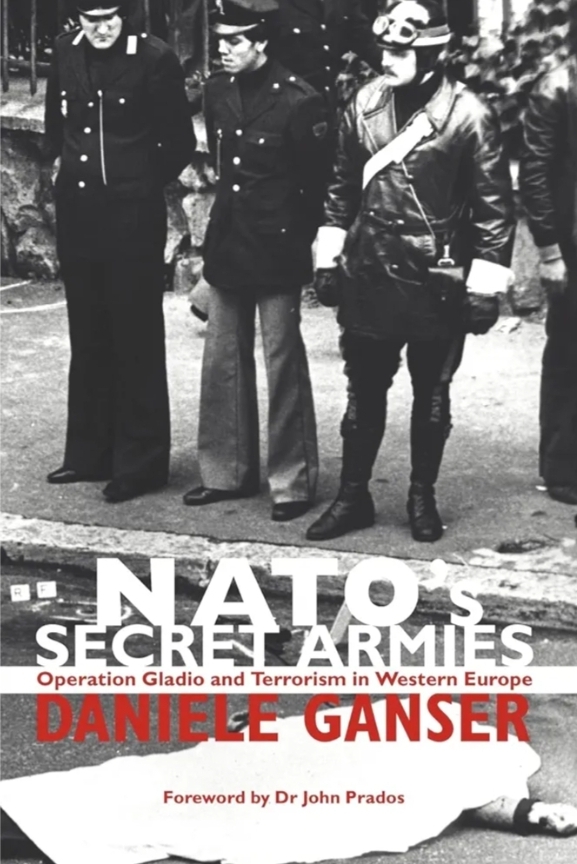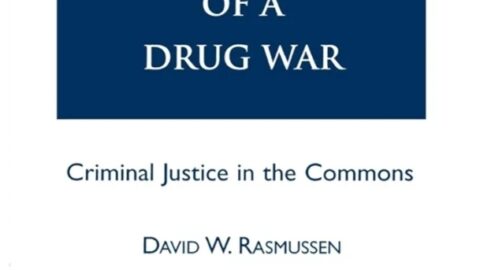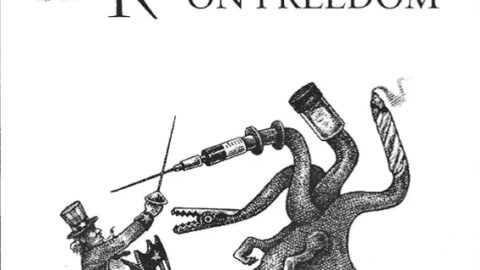“Operation Gladio: The Unholy Alliance between the Vatican, the CIA, and the Mafia” is a comprehensive investigation into a covert network of organizations allegedly coordinated by the CIA in collaboration with the Vatican and the Mafia to carry out covert operations in Europe during the Cold War. Written by Paul L. Williams, a former FBI consultant and investigative journalist, the book was published in 2014. Williams argues that Operation Gladio was a secret strategy developed by the CIA and NATO to conduct clandestine warfare and maintain anti-communist control in post-World War II Europe.
Key Themes and Arguments:
Overview of Operation Gladio:
- Williams describes “Operation Gladio” as part of a larger clandestine NATO operation known as the “Stay-Behind” network, intended to prepare for and resist a potential Soviet invasion of Western Europe. However, he argues that its purpose extended beyond this initial mission, involving the use of terrorism, subversion, and psychological warfare to influence European politics, maintain U.S. influence, and prevent the spread of communism.
- The operation is alleged to have involved secret armies and paramilitary groups equipped and trained by NATO and the CIA, often with the complicity or direct support of European governments.
The CIA’s Role in Covert Operations:
- Williams claims that the CIA played a central role in funding, organizing, and executing Operation Gladio. He describes how the CIA, under the direction of figures like Allen Dulles and James Angleton, sought to counter perceived communist threats by supporting right-wing paramilitary groups, including former Nazi collaborators, fascists, and organized crime syndicates.
- The author provides detailed accounts of the CIA’s efforts to infiltrate European political systems, manipulate elections, and orchestrate false flag attacks to discredit left-wing and communist organizations.
Collaboration with the Vatican:
- A significant focus of the book is the alleged involvement of the Vatican in Operation Gladio. Williams argues that the Vatican, under Popes Pius XII and John Paul II, actively collaborated with the CIA to combat communism, fearing its spread within Catholic countries such as Italy and Spain.
- He claims that the Vatican provided logistical support, funding, and even direct involvement in covert operations. The book examines the Vatican’s use of financial networks, such as the Vatican Bank, to launder money for CIA-backed operations and facilitate arms deals.
The Mafia’s Role in Gladio:
- Williams contends that the Mafia played a crucial role in Operation Gladio, particularly in Italy. He argues that the CIA and the Vatican enlisted the help of the Mafia to carry out assassinations, bombings, and other covert operations against left-wing political figures, labor unions, and organizations that threatened U.S. interests.
- The book discusses how the Mafia’s criminal networks were used to smuggle weapons, launder money, and provide muscle for Gladio’s covert actions, creating an unholy alliance among intelligence agencies, organized crime, and religious institutions.
Terrorism and False Flag Operations:
- A major claim of the book is that Operation Gladio was responsible for numerous acts of terrorism and false flag operations across Europe. Williams discusses events such as the Bologna train station bombing in 1980, which killed 85 people, and the Piazza Fontana bombing in Milan in 1969, both of which were initially blamed on left-wing extremists but later linked to right-wing groups associated with Gladio.
- The author argues that these false flag operations were designed to create a “strategy of tension” to destabilize left-wing political movements, frighten the public, and justify authoritarian responses by governments aligned with U.S. interests.
Financial Networks and Corruption:
- The book delves into the complex financial networks that allegedly supported Operation Gladio, including the use of offshore banks, the Vatican Bank, and Mafia money-laundering operations. Williams claims that these financial networks were instrumental in funding clandestine operations, facilitating arms trafficking, and bribing politicians.
- The author also discusses the mysterious death of Roberto Calvi, an Italian banker closely associated with the Vatican Bank and linked to the Mafia. His death, originally ruled a suicide, is presented as a possible murder tied to the financial intrigues surrounding Operation Gladio.
Impact on European Politics:
- Williams argues that Operation Gladio had a profound impact on post-war European politics, contributing to political instability, corruption, and the suppression of left-wing movements. The book claims that the operation succeeded in influencing elections, supporting right-wing regimes, and maintaining U.S. dominance in the region.
- He contends that Gladio’s legacy continues to affect European politics today, with lingering questions about government accountability, transparency, and the enduring influence of secret intelligence operations.
Specific Examples and Evidence:
- Documentation and Testimonies: Williams draws on a range of sources, including declassified documents, testimonies from former intelligence officers, and parliamentary inquiries, particularly the 1990 investigation by the Italian Senate into Gladio’s activities. He also cites the work of Italian judge Felice Casson, who uncovered evidence of Gladio’s involvement in false flag operations.
- Notable Events Linked to Gladio: The book provides detailed accounts of specific events and incidents allegedly orchestrated by Gladio, such as the Red Brigades’ kidnapping and murder of Italian Prime Minister Aldo Moro in 1978 and the attempted assassination of Pope John Paul II in 1981.
- Collaboration with Fascist Elements: Williams highlights the collaboration between the CIA, Vatican, and right-wing extremist groups, such as the neo-fascist Italian Social Movement (MSI), and their use of violence to manipulate political outcomes and maintain a strong anti-communist front.
Legacy and Impact:
- Contribution to Understanding of Cold War Covert Operations: Despite its controversial nature, “Operation Gladio” has contributed to a greater awareness and discussion of the darker aspects of Cold War history, particularly the use of covert operations to influence domestic politics in sovereign states. The book has sparked interest in further investigation and accountability regarding these historical events.
- Reaffirming the Role of Secret Networks in Geopolitical Strategies: The book has reinforced discussions about the role of secretive organizations in shaping political outcomes, and it serves as a cautionary tale about the dangers of unaccountable intelligence agencies operating outside democratic oversight.
“Operation Gladio: The Unholy Alliance between the Vatican, the CIA, and the Mafia” by Paul L. Williams is a provocative examination of a covert network that allegedly shaped European politics during the Cold War. While controversial in its claims, the book provides a detailed account of how intelligence agencies, religious institutions, and criminal organizations might have colluded to manipulate political outcomes, maintain U.S. influence, and suppress communist movements. Its combination of documented facts, speculative connections, and dramatic storytelling make it a significant, if contentious, work for readers interested in Cold War history, intelligence operations, and international relations.

“NATO’s Secret Armies: Operation GLADIO and Terrorism in Western Europe” by Daniele Ganser explores the clandestine activities of NATO’s secret armies during the Cold War, particularly focusing on Operation Gladio. Ganser’s work delves into how these secret networks operated and their impact on Western Europe.
Key Themes and Arguments:
Operation Gladio Overview:
- Definition: Operation Gladio was a covert NATO operation involving secret armies set up in various European countries to counter the influence of communism during the Cold War.
- Objective: The primary goal was to create a network of stay-behind forces capable of conducting guerrilla warfare and sabotage if Western Europe was invaded by the Soviet Union or if local communist movements gained power.
Establishment of Secret Armies:
- Creation and Structure: Gladio involved the establishment of secret paramilitary organizations in NATO member countries. These groups were often funded and trained by the CIA and other intelligence agencies.
- Operational Secrecy: The operations and existence of these secret armies were kept hidden from the public and even from many within NATO. The secrecy was maintained through compartmentalized information and tight control over operational details.
Connection to Terrorism:
- False Flag Operations: Ganser details how some of these secret armies were involved in false flag operations, where attacks were carried out by these groups but blamed on other political factions, often to manipulate public opinion or justify political actions.
- Historical Incidents: The book examines several incidents of terrorism and violence in Western Europe, suggesting that some of these may have been linked to Gladio operations. This includes bombings and assassinations that were attributed to extremist groups but were potentially orchestrated or influenced by Gladio networks.
Political and Social Impact:
- Manipulation and Influence: Ganser argues that the activities of these secret armies had significant political and social repercussions. The existence and actions of Gladio networks contributed to political instability and shaped public perception of terrorism and extremism.
- Public Revelation: The existence of Operation Gladio and its activities were largely unknown to the public until revelations in the early 1990s, which led to investigations and political scandals in several European countries.
Documented Evidence and Case Studies:
- Research Methodology: Ganser draws on declassified documents, investigative reports, and interviews to build a comprehensive picture of Operation Gladio. He provides detailed case studies and examples to illustrate the impact and reach of these secret armies.
- Conspiracy Theories: The book also addresses the conspiracy theories surrounding Gladio, distinguishing between well-documented facts and speculative elements. Ganser aims to provide a balanced view based on available evidence.
Implications for Democracy and Accountability:
- Erosion of Trust: The revelations about Gladio and its activities raised serious questions about democratic oversight and accountability within NATO and Western intelligence agencies.
- Reforms and Lessons: The book suggests that the hidden operations and manipulation associated with Gladio highlight the need for greater transparency and oversight in intelligence and military operations.
Daniele Ganser’s “NATO’s Secret Armies: Operation GLADIO and Terrorism in Western Europe” offers an in-depth investigation into the clandestine operations of NATO’s secret armies during the Cold War. Through detailed research and analysis, Ganser reveals how these secret networks operated, their connections to terrorism, and their broader impact on European politics and society. The book provides valuable insights into the hidden dimensions of Cold War geopolitics and the challenges of maintaining democratic accountability in the face of secretive and often manipulative operations.






